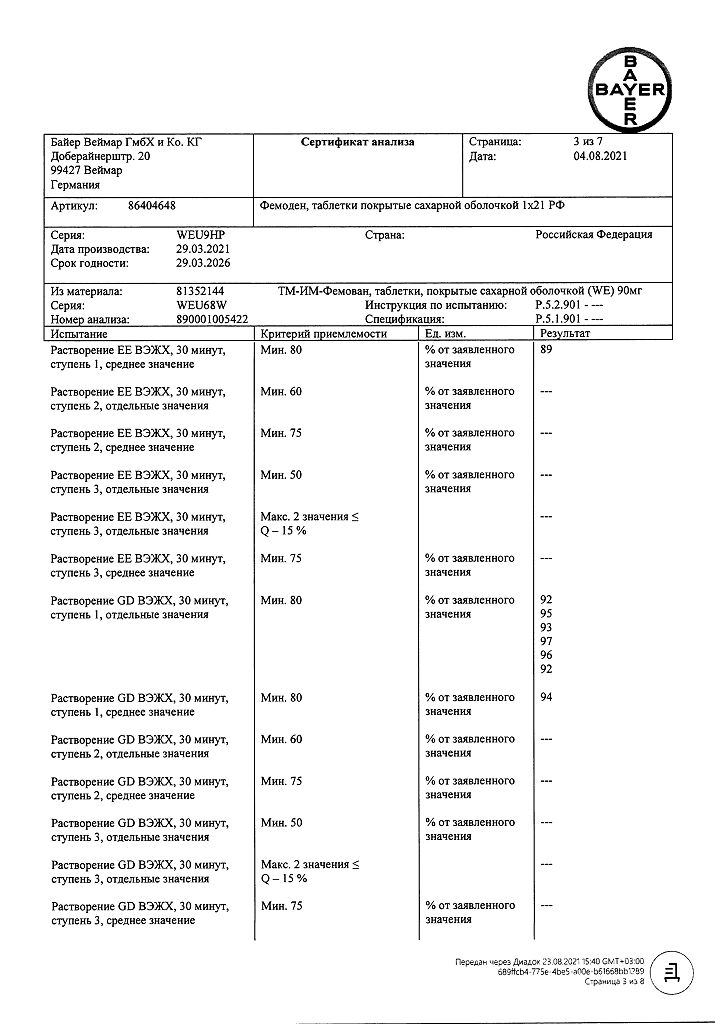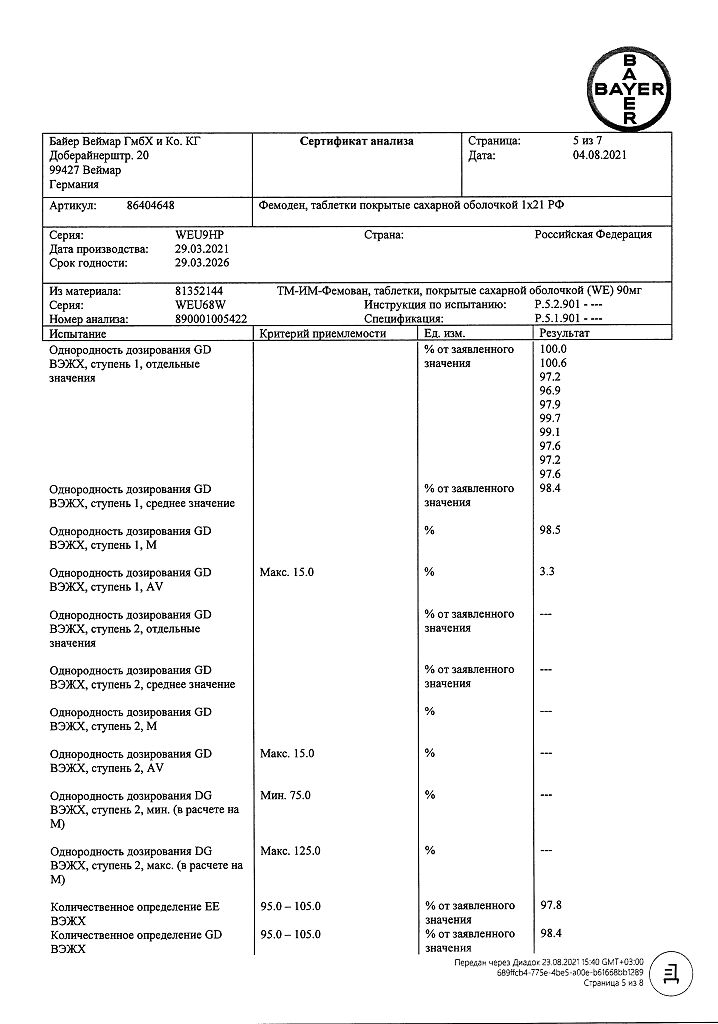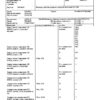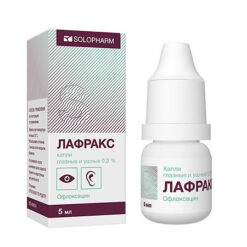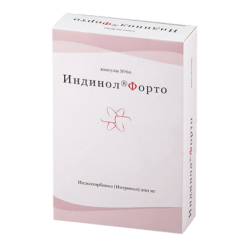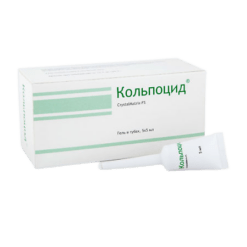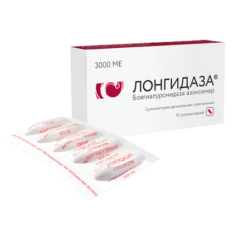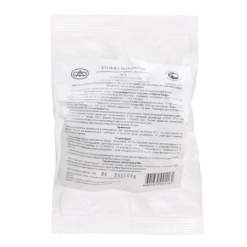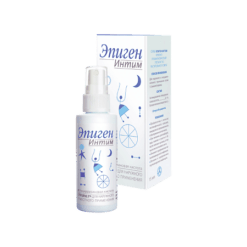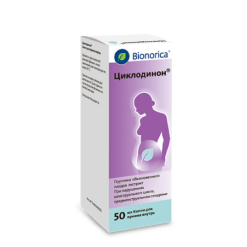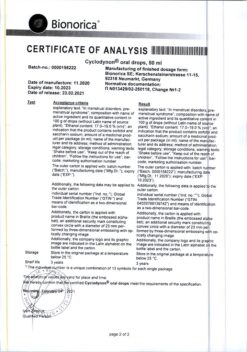No products in the cart.
Femoden, 75 mcg+30 mcg 21 pcs
€26.95 €22.45
EAN: 4057598004879
SKU: 25397
Categories: Contraceptive, Gynecology and Obstetrics, Hormonal, Medicine
Description
Femoden is a low-dose monophasic oral contraceptive.
The contraceptive effect of Femoden is based on the interaction of various factors, the most important of which are inhibition of ovulation and alteration of cervical mucus secretion.
In addition to their contraceptive effect, combined oral contraceptives have positive effects that should be considered when choosing a method of birth control. The cycle becomes more regular, painful menstrual periods are less frequent. the intensity of bleeding decreases, and as a result the risk of iron deficiency anemia decreases.
Pharmacokinetics
Gestoden
Gestoden taken orally is quickly and completely absorbed. The Cmax of gestoden in serum, equal to 4 ng/ml, is reached 1.0 h after oral administration. Absolute bioavailability of gestoden is about 99% of the dose taken.
Gestoden binds to serum albumin and sex steroid-binding globulin (SBSG). Only about 1-2% of total serum gestoden levels are in the free form; approximately 50-70% are specifically bound to hSPCs. The relative distribution of the fractions (free gestoden, albumin-bound, HSPC-bound) depends on the concentration of HSPC in the serum. Following induction of binding protein, the HSPC-bound fraction increases, whereas the free and albumin-bound fractions decrease.
The subsequent biotransformation is similar to the known metabolism of steroids. For gestoden, the apparent volume of distribution is 0.7 L/kg and the metabolic clearance rate from serum is approximately 0.8 ml/min/kg. No interaction has been observed with concomitant administration of ethinylestradiol.
There is a biphasic decrease in serum levels of gestodenone. The terminal phase of distribution is characterized by a half-life of about 12-15 h. Gestoden is not excreted unchanged, only as metabolites which are eliminated with half-life of about 1 day. Gestoden metabolites are excreted with urine and bile in the ratio of about 6:4. Pharmacologically active metabolites of gestoden are not known.
The pharmacokinetics of gestodenes is influenced by the serum level of HSPC, which increases approximately 3-fold under the influence of ethinylestradiol. Increased serum gestoden concentrations are observed with daily administration of the drug. Mean serum levels are approximately 4 times higher when equilibrium concentrations are reached (usually reached during the second half of the cycle).
Ethinylestradiol
Ethinylestradiol is quickly and completely absorbed after oral administration. The Cmax of ethinylestradiol in plasma is about 80 pg/ml and is reached after 1-2 hours. During absorption and the first passage through the liver, a significant portion of ethinylestradiol is metabolized. Absolute bioavailability is about 60%.
About 98.5% of the serum level of ethinylestradiol binds nonspecifically to serum albumin. Ethinylestradiol increases hepatic synthesis of HSPC (sex steroid binding globulin). For ethinylestradiol, the apparent volume of distribution is approximately 5 L/kg.
In absorption and the first passage through the liver, a significant portion of ethinylestradiol is metabolized (mainly by hydroxylation). Metabolites are found both in free form and as glucuronides and sulfates. The metabolic clearance rate from plasma is about 5 ml/min/kg.
There is a biphasic decrease in plasma levels of ethinylestradiol, with a T1/2 end phase of about 24 hours. It is not excreted in unchanged form. Metabolites of ethinylestradiol are excreted in the urine and bile at a ratio of 4:6 with a T1/2 of about 1 day. The equilibrium concentration reached after 3-4 days of administration was 40-60% higher than the concentration of ethinylestradiol after a single dose.
In breastfeeding mothers, about 0.02% of the daily dose of ethinylestradiol can enter the baby’s body with breast milk.
Indications
Indications
Preventing pregnancy.
Pharmacological effect
Pharmacological effect
Femoden is a low-dose monophasic oral contraceptive.
The contraceptive effect of Femoden is based on the interaction of various factors, the most important of which are inhibition of ovulation and changes in the secretion of cervical mucus.
In addition to their contraceptive effects, combined oral contraceptives have positive effects that should be taken into account when choosing a method of birth control. The cycle becomes more regular, painful menstruation is less common. the intensity of bleeding decreases, resulting in a reduced risk of iron deficiency anemia.
Pharmacokinetics
Gestodene
Gestodene taken orally is quickly and completely absorbed. The Cmax of gestodene in serum, equal to 4 ng/ml, is achieved 1.0 hours after oral administration. The absolute bioavailability of gestodene is about 99% of the dose taken.
Gestodene binds to serum albumin and sex steroid binding globulin (SGBS). Only about 1-2% of total serum gestodene levels are in free form, approximately 50-70% are specifically associated with SHBG. The relative distribution of fractions (free gestodene, bound to albumin, bound to SHPS) depends on the concentration of SHPS in the serum. Following the induction of binding protein, the fraction bound to SHPS increases, while the free and albumin-bound fraction decreases.
The subsequent biotransformation is similar to the known metabolism of steroids. For gestodene, the apparent volume of distribution is 0.7 l/kg and the rate of metabolic clearance from serum is about 0.8 ml/min/kg. No interaction has been identified with concomitant administration of ethinyl estradiol.
There is a biphasic decrease in the level of gestodene in the serum. The terminal phase of distribution is characterized by a half-life of about 12-15 hours. Gestodene is not excreted in unchanged form, only in the form of metabolites that are eliminated with a half-life of about 1 day. Gestodene metabolites are excreted in urine and bile in a ratio of about 6:4. Pharmacologically active metabolites of gestodene are not known.
The pharmacokinetics of gestodene is affected by the serum level of SHPS, which increases approximately 3-fold under the influence of ethinyl estradiol. When taking the drug daily, an increase in the concentration of gestodene in the blood serum is observed. Average serum levels are approximately 4 times higher when steady state concentrations are reached (usually achieved during the second half of the cycle).
Ethinyl estradiol
After oral administration, ethinyl estradiol is rapidly and completely absorbed. Cmax of ethinyl estradiol in plasma, approximately 80 pg/ml, is achieved after 1-2 hours. During absorption and the first passage through the liver, a significant part of ethinyl estradiol is metabolized. Absolute bioavailability is about 60%.
About 98.5% of serum ethinyl estradiol levels are nonspecifically bound to serum albumin. Ethinyl estradiol increases the hepatic synthesis of SHBG (sex steroid binding globulin). For ethinyl estradiol, the apparent volume of distribution is approximately 5 L/kg.
During absorption and the first passage through the liver, a significant part of ethinyl estradiol is metabolized (mainly by hydroxylation). Metabolites are found both in free form and in the form of glucuronides and sulfates. The rate of metabolic clearance from plasma is approximately 5 ml/min/kg.
There is a biphasic decrease in the level of ethinyl estradiol in plasma, with T1/2 of the final phase of about 24 hours. It is not excreted from the body unchanged. Ethinyl estradiol metabolites are excreted in urine and bile in a ratio of 4:6 with T1/2 for about 1 day. The steady-state concentration achieved after 3-4 days of administration was 40-60% higher than the concentration of ethinyl estradiol after a single dose.
In nursing mothers, about 0.02% of the daily dose of ethinyl estradiol can pass into the baby’s body through breast milk.
Special instructions
Special instructions
If any of the conditions/risk factors listed below currently exist, the potential risks and expected benefits of combined oral contraceptives should be carefully weighed on an individual basis and discussed with the woman before she decides to start taking the drug.
If any of these conditions or risk factors worsen, intensify, or appear for the first time, a woman should consult her doctor, who may decide whether to discontinue the drug.
Diseases of the cardiovascular system
There is evidence of an increased incidence of venous and arterial thrombosis and thromboembolism (such as deep vein thrombosis, pulmonary embolism, myocardial infarction, stroke) when taking combined oral contraceptives.
The risk of developing venous thromboembolism (VTE) is greatest in the first year of taking such drugs. Estimated incidence of VTE among women taking low-dose oral contraceptives (
The risk of developing thrombosis (venous and/or arterial) and thromboembolism increases:
– with age;
– in smokers (with an increase in the number of cigarettes or an increase in age, the risk further increases, especially in women over 35 years of age);
if available:
– family history (i.e. venous or arterial thromboembolism ever in close relatives or parents at a relatively young age); in case of hereditary predisposition, the woman should be examined by an appropriate specialist to decide on the possibility of taking combined oral contraceptives;
– obesity (body mass index more than 30 kg/m2);
– dislipoproteinemia;
– arterial hypertension;
– migraine;
– diseases of the heart valves;
– atrial fibrillation;
– prolonged immobilization, major surgery, any leg surgery or major trauma. In these situations, it is advisable to stop using combined oral contraceptives (in the case of planned surgery, at least four weeks before it) and not to resume use for two weeks after the end of immobilization.
The possible role of varicose veins and superficial thrombophlebitis in the development of venous thromboembolism remains controversial. The increased risk of thromboembolism in the postpartum period should be taken into account.
Peripheral circulatory disorders may also occur in diabetes mellitus, systemic lupus erythematosus, hemolytic uremic syndrome, chronic inflammatory bowel disease (Crohn’s disease or ulcerative colitis) and sickle cell anemia.
An increase in the frequency and severity of migraine during use of combined oral contraceptives (which may precede cerebrovascular events) may be grounds for immediate discontinuation of these drugs.
Tumors
The most significant risk factor for developing cervical cancer is persistent papilloma viral infection. There are reports of a slight increase in the risk of developing cervical cancer with long-term use of combined oral contraceptives. The connection with the use of combined oral contraceptives has not been proven. Controversy remains regarding the extent to which these findings are related to screening for cervical pathology or to sexual behavior (lower use of barrier methods of contraception).
It was also found that there is a slightly increased relative risk of developing breast cancer diagnosed in women who used combined oral contraceptives (relative risk 1.24). The increased risk gradually disappears within 10 years of stopping these drugs. Its connection with the use of combined oral contraceptives has not been proven. The observed increased risk may also be a consequence of earlier diagnosis of breast cancer in women using combined oral contraceptives. Women who have ever used combined oral contraceptives are diagnosed with earlier stages of breast cancer than women who have never used them.
In rare cases, during the use of combined oral contraceptives, the development of liver tumors has been observed, which in some cases led to life-threatening intra-abdominal bleeding. If severe abdominal pain, liver enlargement, or signs of intra-abdominal bleeding occur, this should be taken into account when making a differential diagnosis.
Other states
Women with hypertriglyceridemia (or a family history of this condition) may have an increased risk of developing pancreatitis while taking combined oral contraceptives.
Although mild increases in blood pressure have been described in many women taking combined oral contraceptives, clinically significant increases have rarely been reported. However, if a persistent, clinically significant increase in blood pressure develops while taking combined oral contraceptives, these drugs should be discontinued and treatment of hypertension should be initiated. Taking combined oral contraceptives can be continued if normal blood pressure values are achieved with antihypertensive therapy.
The following conditions have been reported to develop or worsen both during pregnancy and while taking combined oral contraceptives, but their relationship with taking combined oral contraceptives has not been proven: jaundice and/or pruritus associated with cholestasis; formation of gallstones; porphyria; systemic lupus erythematosus; hemolytic uremic syndrome; chorea; herpes during pregnancy; hearing loss associated with otosclerosis. Cases of Crohn’s disease and ulcerative colitis have also been described during the use of combined oral contraceptives.
Acute or chronic liver dysfunction may require discontinuation of combined oral contraceptives until liver function tests return to normal. Recurrent cholestatic jaundice, which develops for the first time during pregnancy or previous use of sex hormones, requires discontinuation of combined oral contraceptives.
Although combined oral contraceptives may have an effect on insulin resistance and glucose tolerance, there is no need to change the therapeutic regimen in diabetic patients using low-dose combined oral contraceptives (Chloasma may occasionally develop, especially in women with a history of chloasma in pregnancy. Women with a tendency to chloasma should avoid prolonged sun exposure and exposure while taking combined oral contraceptives ultraviolet radiation.
Laboratory tests
Taking combined oral contraceptives may affect the results of some laboratory tests, including liver, kidney, thyroid, adrenal function, plasma transport protein levels, carbohydrate metabolism, coagulation and fibrinolysis parameters. Changes usually do not go beyond normal values.
Effect on the menstrual cycle
While taking combined oral contraceptives, irregular bleeding (spotting or breakthrough bleeding) may occur, especially during the first months of use. Therefore, any irregular bleeding should be assessed only after an adaptation period of approximately three cycles.
If irregular bleeding recurs or develops after previous regular cycles, careful evaluation should be performed to rule out malignancy or pregnancy.
Some women may not develop withdrawal bleeding during a break from taking the tablets. If combined oral contraceptives are taken as directed, the woman is unlikely to be pregnant. However, if combined oral contraceptives have not been taken regularly before or if there are no consecutive withdrawal bleeds, pregnancy should be ruled out before continuing to take the drug.
Medical examinations
Before starting or resuming the use of the drug Femoden, it is necessary to familiarize yourself with the woman’s life history, family history, conduct a thorough general medical examination (including measurement of blood pressure, heart rate, determination of body mass index) and gynecological examination (including examination of the mammary glands and cytological examination of cervical mucus), and exclude pregnancy. The scope of additional studies and the frequency of follow-up examinations are determined individually.
Typically, follow-up examinations should be carried out at least once a year.
A woman should be warned that drugs like Femoden do not protect against HIV infection (AIDS) and other sexually transmitted diseases!
Impact on the ability to drive a car and equipment. Not identified.
Active ingredient
Active ingredient
Gestodene, Ethinylestradiol
Composition
Composition
Active ingredient:
0.075 mg gestodene and 0.03 mg ethinyl estradiol.
Excipients:
lactose monohydrate,
corn starch,
povidone 25000,
sodium calcium edetate,
magnesium stearate,
sucrose,
povidone 700000,
polyethylene glycol (macrogol) 6000,
calcium carbonate,
talc,
montanno-glycolic wax.
Contraindications
Contraindications
tumors of the mammary glands and genital organs
bloody discharge from the genital tract of unknown origin
thrombophlebitis
kidney and liver dysfunction
severe diabetes mellitus
atherosclerosis
migraine.
Side Effects
Side Effects
The following undesirable effects have been described in women taking Femoden, and their relationship with the drug has been neither confirmed nor refuted: engorgement, tenderness of the mammary glands, secretion from them; headache; migraine; change in libido; decreased mood; poor tolerance to contact lenses; nausea; vomit; changes in vaginal secretion; various skin reactions; fluid retention; change in body weight; hypersensitivity reactions.
Chloasma can sometimes develop, especially in women with a history of pregnancy chloasma.
Interaction
Interaction
Interaction of oral contraceptives with other drugs may lead to breakthrough bleeding and/or decreased contraceptive reliability. The following types of interactions have been reported in the literature.
Effect on hepatic metabolism: the use of drugs that induce liver microsomal enzymes can lead to an increase in the clearance of sex hormones. Such drugs include: phenytoin, barbiturates, primidone, carbamazepine, rifampicin; There are also suggestions for oxcarbazepine, topiramate, felbamate, ritonavir and griseofulvin and products containing St. John’s wort.
Effect on enterohepatic circulation: According to individual studies, some antibiotics (for example, penicillins and tetracyclines) may reduce the enterohepatic circulation of estrogens, thereby reducing the concentration of ethinyl estradiol.
While taking medications that affect microsomal enzymes, and for 28 days after their discontinuation, you should additionally use a barrier method of contraception.
While taking antibiotics (such as ampicillins and tetracyclines) and for 7 days after their discontinuation, you should additionally use a barrier method of contraception. If the period of use of the barrier method of protection ends later than the tablet in the package, you need to move on to the next package of Femoden without the usual break in taking the tablet. Oral combined contraceptives may affect the metabolism of other drugs (including cyclosporine), which leads to changes in their concentrations in plasma and tissues.
Overdose
Overdose
No serious adverse events have been reported following overdose. Symptoms that may occur in case of overdose: nausea, vomiting, spotting or metrorrhagia.
There is no specific antidote; symptomatic treatment should be carried out.
Storage conditions
Storage conditions
At a temperature not higher than 25°C.
Shelf life
Shelf life
5 years.
Manufacturer
Manufacturer
Bayer Weimar GmbH & Co. KG, Germany
Additional information
| Shelf life | 5 years. |
|---|---|
| Conditions of storage | At a temperature not exceeding 25°C. |
| Manufacturer | Bayer Weimar GmbH & Co. KG, Germany |
| Medication form | pills |
| Brand | Bayer Weimar GmbH & Co. KG |
Other forms…
Related products
Gynecology and Obstetrics
Buy Femoden, 75 mcg+30 mcg 21 pcs with delivery to USA, UK, Europe and over 120 other countries.


